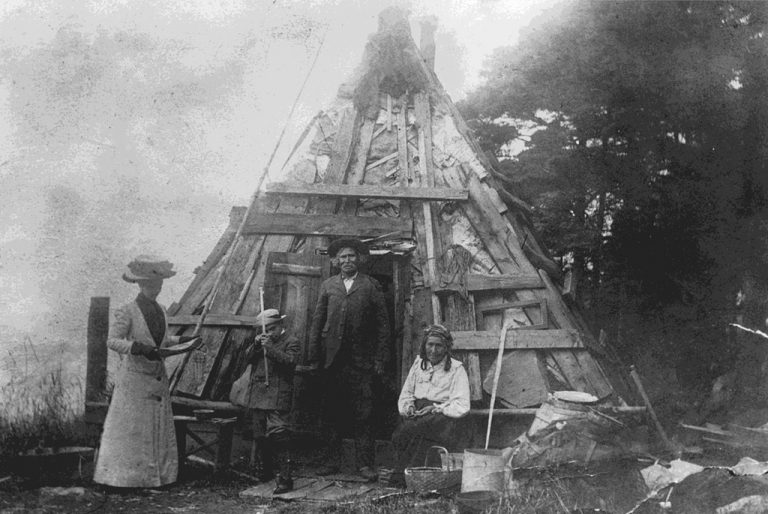Materials required: projector, whiteboard, classroom set up in debate style
While showing the photographs provided earlier in this lesson, introduce the topics of land occupation, religious conversion, the effect of diseases, and the fur trade. Divide your class into groups of four; then have each group split into pairs and have them take a stand on land ownership by holding a debate on whether Wabanaki in the past should have been allowed to reclaim traditional land that they had left while being involved in the fur trade. Ask each pair of students to prepare their position by formulating their arguments on the topics mentioned above. Each person in turn (one from the first side; then one from the other) speaks for three minutes. Then each speaker has two minutes to rebut their opponents on the other side. Then, the second speaker on a team goes first. This is followed by a second rebuttal. Have the class decide on the most convincing arguments. Use these questions to start the discussion.
- What kinds of land and waters did the Wabanaki value most in what is now the Atlantic Provinces? What kinds of lands and waters did Europeans value?
- In what ways did European worldviews conflict with the Waponahkiyik way of life?
- What aspects of Wabanaki villages would have allowed Europeans to think of them as simply ‘camping spots’ or ‘seasonal gathering places’ rather than actual settlements? What would they have seen there? Why might they have preferred to think of them in this way?
- What might Wabanaki have thought of European villages, cities, and rural areas?
- How would land use be different in Canada today if Europeans had developed the Waponahkiyik way of using the land?





